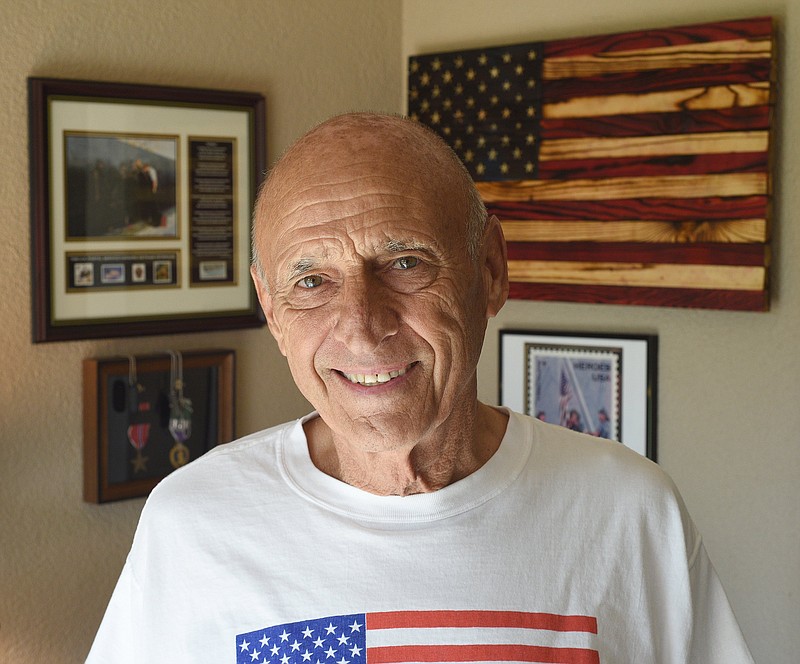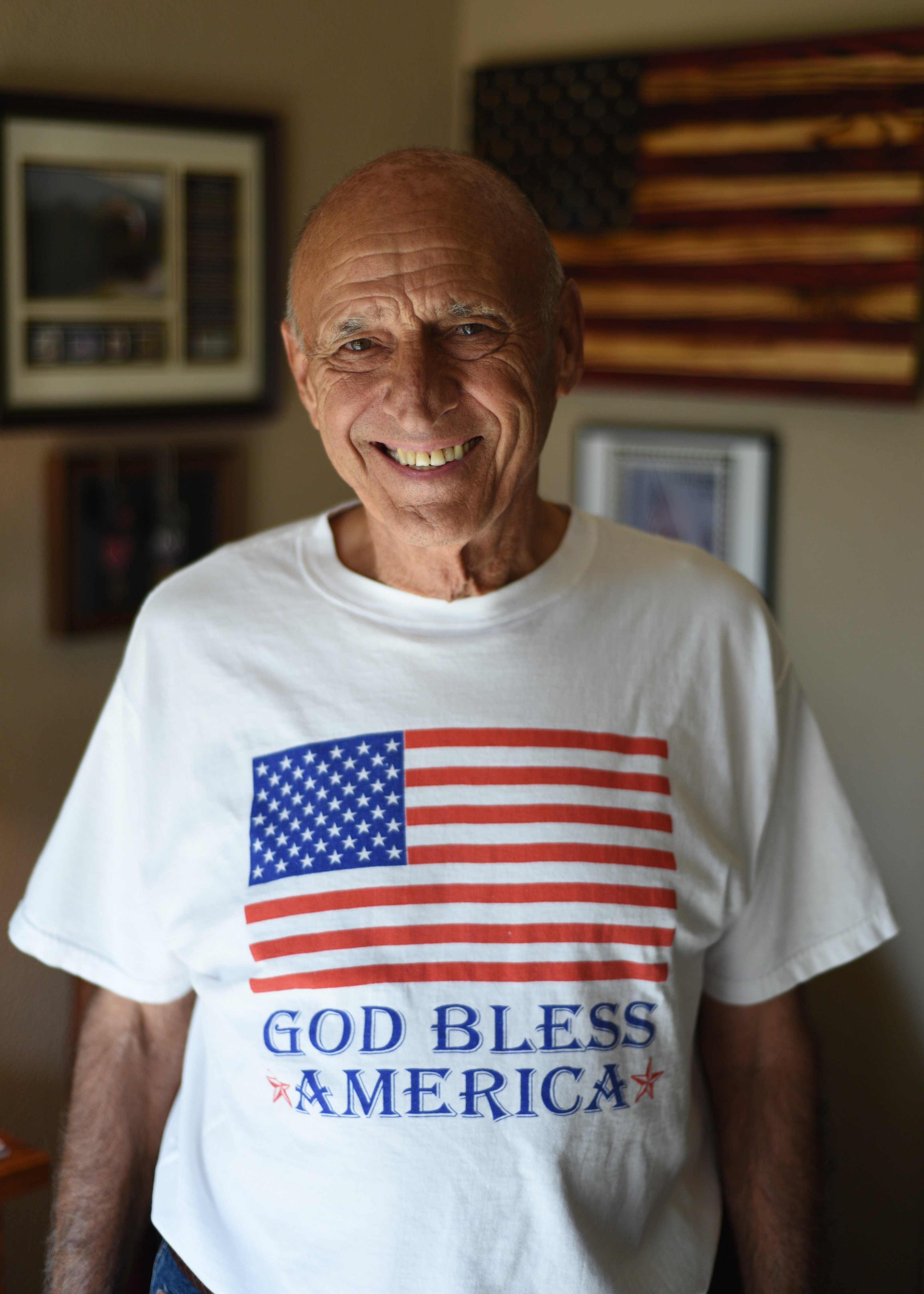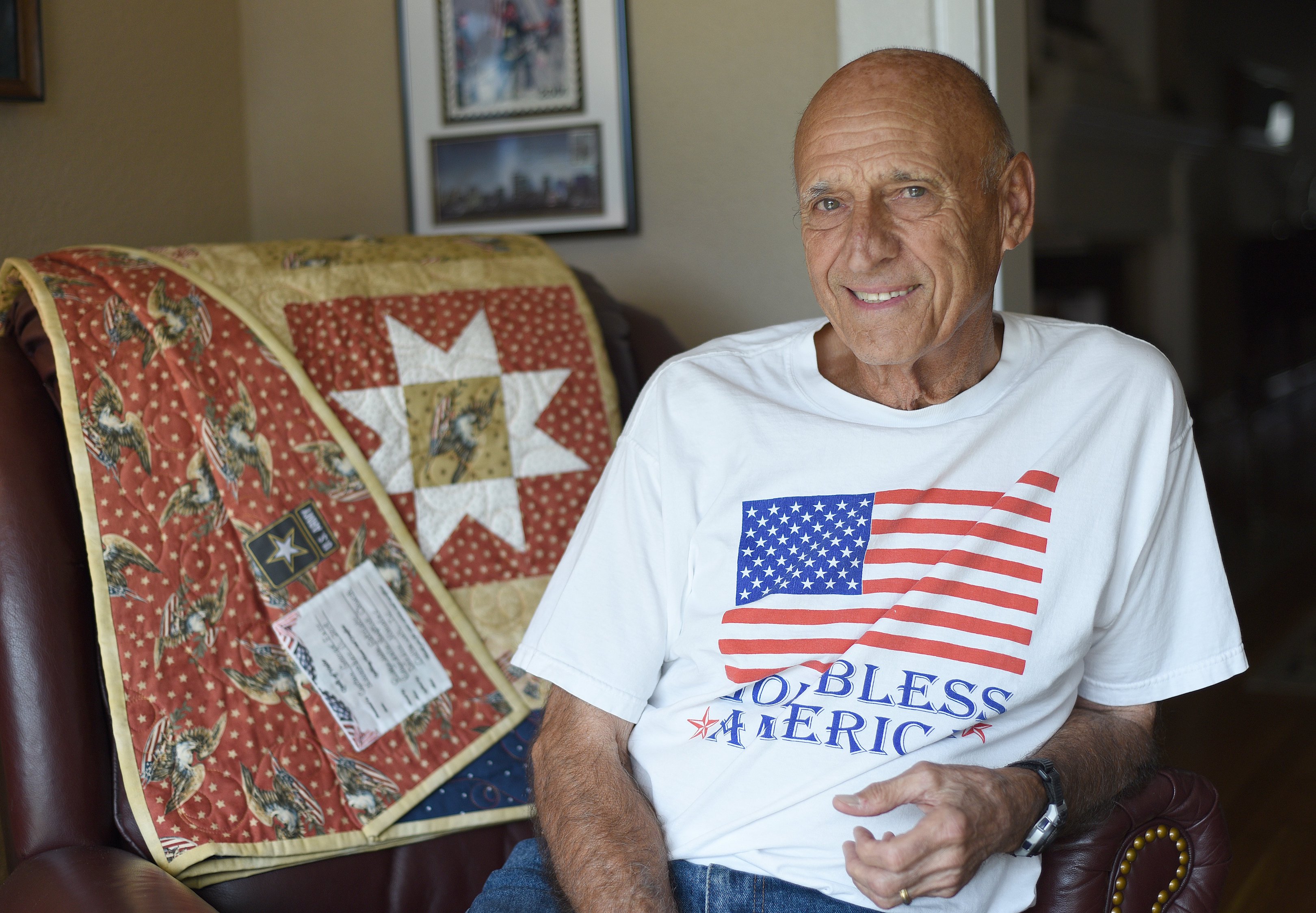George Farr has a "Combat Wounded" license plate on his Buick SUV.
His Purple Heart, earned in the Vietnam War, is in a frame on the wall of his home in the Black Creek golf community southwest of downtown Chattanooga.
"People stop and tell me, 'I saw your [car] tag. Thank you for your service,'" Farr, 78, a retired pharmaceutical salesman, said.
Rarely a day goes by he doesn't think about events he experienced in the jungles of Vietnam as a 24-year-old U.S. Army lieutenant in 1967, Farr said.
He was a forward observer for a combat platoon engulfed in a four-hour firefight on Mother's Day (May 14) 1967 near Chu Lai, Vietnam. Of the 65 men in the platoon, 10 were killed and 40 (including Farr) were wounded that day.
Farr spent about five months in military hospitals recovering from injuries from shrapnel in his back and right hip.
"I thank God every day that he brought me back for whatever reason," Farr said. "I try to live the kind of life that will let people see the good in me."
Fresh out of then-University of Chattanooga, Farr volunteered for service in Vietnam because he wanted to be part of the Army's famed 101st Airborne Division. His father and four of his six uncles had served in World War II.
A college wrestler and graduate of the university's ROTC program, Farr had a wife, Terry, who he met and married while in college. At the time of his Vietnam War service, the Farrs had a baby son and another child on the way. They lived in a $30-a-month apartment on Oak Street.
After "jungle school" in Panama to simulate fighting in Vietnam, Farr was assigned to the 101st Airborne Division's Second Infantry Battalion.
"When we stepped off the plane going to Vietnam at Phan Rang [Air Force Base] there were 15 or 20 body bags out there [on the tarmac]. If that doesn't open your eyes, nothing will," Farr recalled.
As a forward observer, Farr was responsible for calling in artillery support when his unit came under fire. He worked alongside a reconnaissance sergeant and a radioman.
BIO
Name: George FarrAge: 78Branch of military: ArmyYears of service: 1966-1967
The night before they were ambushed in May 1967, Farr's platoon had experienced an unusually quiet night, which raised his suspicion that North Vietnamese forces in the area were planning an attack.
He suggested that day that firing big guns ahead of his platoon's advance might thwart any such plans, but a decision was made by a superior officer to hold off.
Within an hour after Farr's request, the platoon came under heavy fire, which turned out to be an elaborate ambush that included two machine gun nests and as many as 500 enemy combatants.
"They enclosed us," Farr said. "We were completely surrounded."
He remembers telling the platoon captain, "Cap, we've got to knock those guns out, or we are not going to make it out of here."
Soon, the fighting became so intense that Farr was forced to call in artillery support, even though the angle of attack was uncomfortably close to his own men.
When the first wave of artillery shells failed to penetrate the enemy machine-gun bunkers, Farr reset the firing coordinates, dropping the shells on the enemy even closer to the U.S. soldiers.
Three of the four incoming shells hit their mark and gravely wounded the enemy forces, but one hit a treetop and tumbled into the U.S. platoon, landing perhaps 20 feet from Farr and his assistants. His recon sergeant was killed instantly, and Farr was seriously wounded.
"Cease fire! Cease fire!" he shouted over the field radio.
Although he couldn't feel his legs, Farr gathered all the ammo within his reach. He was convinced the enemy would overrun his position at any second but vowed to himself to go down shooting.
(READ MORE: As a Merchant Marine, Jim Perrine traveled treacherous waters to supply the troops)
Luckily, the other shells had hit their mark and American reinforcements arrived. Eventually, Farr was strapped onto the side of a medical helicopter and taken to the site of a mobile surgery unit, where much of the shrapnel was removed.
While he was still in the mobile hospital, Farr said a general visited his bedside, pinned on his Purple Heart and assured him his actions on the battlefield had saved lives.
After several surgeries and leg pain he describes as piling hot coals on top of his right foot, Farr eventually got relief through a procedure that clipped some of the nerves to his right leg.
Even now, 54 years later, Farr said sometimes his leg still hurts.
He was able to return to Chattanooga after the war and worked 39 years selling pharmaceuticals for the Schering-Plough Corp. When a replica of the Vietnam Memorial came to Chattanooga several years ago, Farr visited and found his recon sergeant's name etched in the wall.
"When I found his name I broke down," Farr recalls. "It just breaks my heart."
Now retired, he enjoys golf and watching his grandchildren play sports.
"I had nightmares at first," Farr said of his Vietnam experience. "But with the help of a loving wife and the Lord, I was able to work through it."
Contact Mark Kennedy at mkennedy@timesfreepress.com.
Veteran Salute will be published daily through Veterans Day on Nov. 11. Read about more veterans at timesfreepress.com/veterans/2021.


